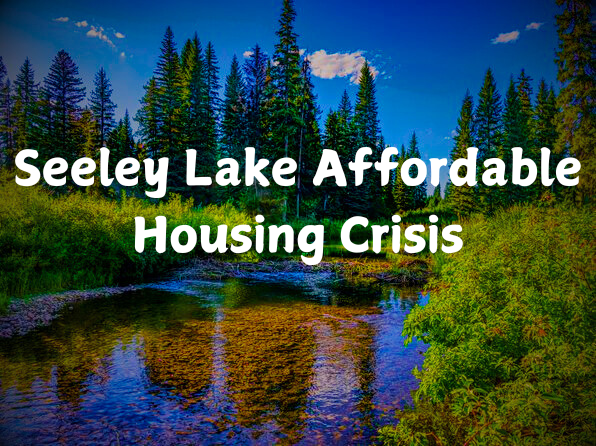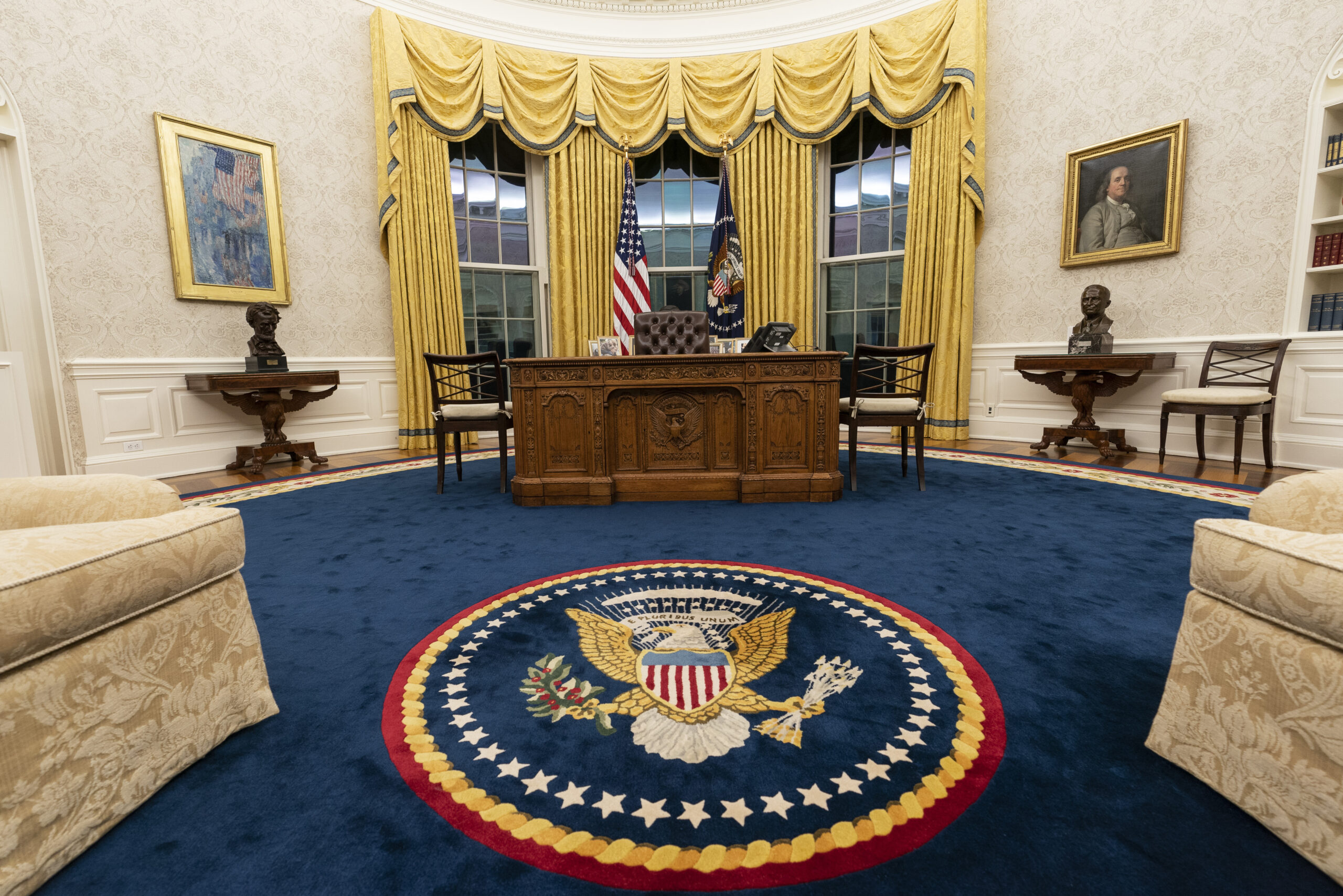The Seeley Lake affordable housing crisis has become an urgent issue for residents, workers, and business owners in this picturesque Montana community. This scenic Montana community is well known for its views and outdoor recreation, but it has been faced with a decrease in affordable housing.
Many rural U.S. communities face an affordable housing crisis directly, and Seeley Lake is among them. The very remote location of the area, seasonality in tourism, and limited development resources exacerbate the challenges.
For residents, housing shortages lead to unstable living, an inability to experience economic growth, and damaged community well-being.
This article will explore the Seeley Lake affordable housing crisis, its causes, its impact on residents and local businesses, and the efforts being made to address it. We will also look at possible solutions to keep Seeley Lake an accessible, thriving community.
What is the Seeley Lake Affordable Housing Crisis?
The Seeley Lake affordable housing crisis refers to the shortage of affordable homes and rental properties in the Seeley Lake area. Growing demand and constricted supply make it hard for residents, especially those of low- and middle-income families, to find suitable housing.
Affordable housing means housing that costs no more than 30% of a household’s income. In Seeley Lake, rising prices have pushed many families out of the market. This lack of affordable options has led to higher rents, longer wait times, and increased homelessness.
Key Statistics on the Housing Crisis in Seeley Lake:
- The average rent for a one-bedroom has increased by 20% over the past five years.
- The median home price in Seeley Lake is approximately $300,000, well above the national average.
- 35% of renters in Seeley Lake are “cost-burdened,” spending more than 30% of their income on rent.
- Seasonal workers, retirees, and tourists increase housing demand, driving prices up.
High demand for housing, coupled with an insufficient supply, has left numerous families without any affordable options. The crisis affects not only those seeking permanent places to live but also seasonal workers, key to the local economy—especially in the form of tourism and outdoor recreation.
Causes of the Seeley Lake Affordable Housing Crisis
Key factors in the Seeley Lake affordable housing crisis include rising demand, insufficient new construction, and few affordable rentals.
Increasing Housing Demand
The housing crisis in Seeley Lake is driven by demand. The population has grown steadily over decades, and the place has been an alluring destination for retirees and working people wanting to take a respite from urban life.
- Population Growth: The latest census shows Seeley Lake’s population grew by 10% in five years as more people move to rural Montana’s scenic and quiet areas.
- Seasonal Workers and Retirees: have moved to Seeley Lake to enjoy outdoor activities, putting pressure on the housing market. Unaffordable temporary seasonal housing means they must seek long-term options, which are in short supply.
- Tourism and Second Homes: Seeley Lake has seen an increase in tourism demand for homes, especially second homes. Vacation homes and short-term rentals like Airbnb take out housing stock from long-term residents and limit options for locals.
Building Insufficient New
The housing shortage is being aggravated by the lack of new construction. The very rural nature of Seeley Lake brings with it some unique development challenges:
- Zoning and Regulations: can make new house construction difficult. Environmental safeguards to preserve the beauty of an area can also hinder development.
- Construction Costs: Rising material costs and labor shortages make affordable housing too pricey for developers. Most of the time, these are passed on to buyers and renters in the form of higher prices.
Few Affordable Housing Choices
There isn’t affordable housing in Seeley Lake for low-income residents. The few existing units are usually outmoded, in disrepair, or being rented at market rates. With demand on the rise, gaining access to the few available becomes increasingly difficult.
- High Vacancy Rates for Rentals: Many Seeley Lake landlords are renting out properties as short-term vacation rentals, decreasing long-term rental availability.
- Low-Income Housing Deficits: The rural areas, like Seeley Lake, have underfunded programs for low-income housing that cannot meet rising demand, leaving these residents without options.
Read: How to Lease Land Lot to Own Home Contract: Your Step-by-Step Guide
Impact of the Seeley Lake Affordable Housing Crisis on Residents
It’s not just a numbers game, though; real, tangible results of the Seeley Lake affordable housing crisis are the effects it has had on the lives of those calling this rural Montana community home.
For many residents, the increased cost of housing combined with a decreased availability of rental properties has resulted in significant hardships. This section examines several ways the housing crisis is impacting individuals, families, and the local economy.
a.) Increased Cost of Living
One of the most immediate results of the affordable housing crisis in Seeley Lake is the increased cost of living for residents. While the cost of housing has gone up astronomically, so too has everything else.
- Higher Rent: Rentals of apartments and houses have reached inordinately high prices these past years. Many families and individuals who used to be able to afford renting in Seeley Lake now have to spend an unsustainable portion of their income on housing. By some recent estimates, rent for a two-bedroom apartment in Seeley Lake has jumped almost 25% in the last two years alone.
- Housing Market Displacement: Many low-income residents have been pushed to move completely out of Seeley Lake, seeking more affordable housing in surrounding towns. This often leaves them with lengthy commutes to work, adding to their cost of living. As transportation costs start to rise, it only continues to be more difficult for people to get by.
- Housing costs are increased by: Housing increases demand for local services, driving up prices for goods, health care, and utilities. Local grocers and businesses may also increase prices due to the employees having to spend more money on housing to work in the area, further squeezing residents’ budgets.
b.) Housing Instability
Housing instability is another severe consequence of the housing crisis in Seeley Lake. For most people who live there, the struggle to find and maintain available affordable housing means living with almost no predictability.
- Evictions: Rent continues to rise, and with it, more and more families are falling behind on their payments and getting evicted. According to local advocacy groups, eviction rates have risen in recent years in Seeley Lake, especially among renters who get priced out of the market.
- Homelessness: As housing instability increases, so too does the risk of homelessness. While homeless persons are more often associated with urban areas, rural communities like Seeley Lake are by no means immune. Without adequate shelters or social services in place, individuals and families who find themselves at risk of eviction or foreclosure often have few options for securing safe and stable housing.
- Temporary Housing: Many families have to resort to temporary housing solutions such as staying with their relatives or friends. While this may work in the short run, it can bring in additional stress and strain upon relationships and also contribute to mental and emotional health issues.
c.) Economic Impact on Local Businesses
The affordable housing crisis in Seeley Lake does not only affect residents; it greatly affects local businesses, too, because the labor supply has fallen due to the lack of available housing for workers. Many Seeley Lake employers rely on seasonal help in industries such as hospitality, retail, and construction.
However, the lack of options has made hiring and retaining employees increasingly difficult for these businesses.
- Worker Shortages: Local businesses are struggling to fill key positions due to the lack of affordable housing. Seasonal workers, who play a critical role in Seeley Lake’s tourism-driven economy, often have nowhere to live when they come to the area. The difficulty of finding housing has led to staffing shortages, reduced service hours, and in some cases, business closures.
- Increased wages: Some businesses, due to the housing crisis and lack of workers, have increased wages in order to attract employees. But it is only driving up the living cost because businesses pass on such costs to consumers by means of price increases.
- Reduced Growth of Businesses: Without a stable workforce, businesses cannot expand or operate at full capacity. Economic growth in Seeley Lake, therefore, is being hurt as a consequence. Above all, the small businesses that are reliant on seasonal workforces are losing vast amounts of revenues, consequently affecting the overall economy of the area.
d.) Social and Community Impacts
Beyond the financial and economic toll, the Seeley Lake affordable housing crisis can also be viewed as an attack on the social fabric of the community. With families having to leave or struggle staying in the area, the social cohesion and sense of community that makes Seeley Lake so special start to unravel.
- Generational Displacement: With the increase in unaffordable housing prices, many long-time residents are forced to leave Seeley Lake. This has resulted in the displacement of multi-generational families who lived in the area for decades. Certainly, losing these residents will diminish a sense of community and heritage important in the local culture.
- Fraying of Community Networks: When individuals relocate, community networks of support, friendship, and social connections gradually weaken. For those already making do on less-than-sufficient incomes, the loss of such networks can heighten isolation and mental health problems. Particularly, the loss of family-friendly housing makes starting families harder for the young generations of Seeley Lake.
- Local Education: If the families cannot afford to stay in Seeley Lake, they move out of the area and take their children to other schools. This disrupts education for the children and reduces the number of students flowing through the local schools, thereby reducing funding and resources for the school district.
Efforts to Address the Seeley Lake Affordable Housing Crisis
The Seeley Lake affordable housing crisis has not gone unnoticed. Both local government officials, nonprofit organizations, and concerned community members are actively working to find solutions to the problem.
a.) Local Government Initiatives
The local governments in Seeley Lake have just recently awakened to the crisis of affordable housing. Local finances and country challenges have restricted large-scale solution implementations. Be that as it may, several programs and policy changes are improving the situation.
- Zoning and Planning Adjustments: The local government has already begun revising zoning laws to accommodate developers in building more affordable housing. This has included the efforts toward accommodating higher densities of development-such as duplexes and multi-family units-along areas previously zoned for single-family homes only.
- Incentives for Developers: The Seeley Lake government is also considering offering incentives to private developers who are willing to build affordable housing in the area.
- Public-Private Partnerships: Fully realizing that the affordable housing crisis cannot be tackled by a single segment of society, the local government is developing PPPs in financing and constructing new housing projects.
b.) Community-Based Solutions
While government-led initiatives are crucial, from the grass roots, too, something is being done to help alleviate the crisis in housing. Local nonprofits, community organizations, and individual volunteers work together to provide both short-and long-term solutions.
- Seeley Lake Community Housing Task Force: The Seeley Lake Community Housing Task Force has helped raise awareness about the housing crisis through community meetings, research, and advocating for policy changes that prioritize affordable housing development.
- Community-based solutions such as the promotion of homeownership programs for low- and moderate-income residents are especially innovative. Groups like Habitat for Humanity have been working to provide affordable home-buying opportunities in Seeley Lake.
- Short-term housing solutions also involve local organizations providing temporary housing for individuals who have been evicted or become homeless. Local churches, community centers, and other organizations open their doors to house the displaced residents until long-term alternatives can be advanced.
c.) State and Federal Assistance
The state of Montana and the federal government also have important roles to play in dealing with the crisis around affordable housing in Seeley Lake.
The Montana Department of Commerce has a number of programs that are designed to increase the availability of affordable housing throughout the state.
For instance, the Montana Housing Fund provides financial assistance for the development and rehabilitation of affordable housing. These funds may be employed towards the creation of new units in Seeley Lake.
Likewise, there is a Low-Income Housing Tax Credit program that extends tax credits to developers based on an agreement to build homes for low-income persons.
- Federal Housing Programs: On the federal level, the Department of Housing and Urban Development (HUD) administers several programs that can be tapped into for affordable housing development in rural areas. These include grants, loans, and tax credits aimed at improving housing conditions.
- Rural Housing Development Programs: Federal funds are available under the USDA for the purpose of constructing affordable housing in rural areas. The Rural Housing Service, a department within the USDA, provides loans and grants to developers and nonprofit organizations that engage in building affordable home units in underserved areas, including Seeley Lake.
Challenges with Government Solutions
Even with all these programs and initiatives, several challenges persistently hamper the delivery of affordable housing projects within Seeley Lake.
- Funding Limitations: The funds available for affordable housing in rural areas like Seeley Lake are limited and highly sought after. There is often not enough money to meet the demand for housing in rural Montana, even with programs set up through the state and federal government.
- Regulatory Hurdles: While some zoning changes and regulatory adjustments are being made, local bureaucratic processes can be slow. Additionally, environmental and land-use regulations often create additional obstacles for developers, making it harder to build new homes in the area.
- Lack of Long-Term Fixes: Most of the current government initiatives are short-term solutions, like temporary housing or rental assistance programs. While these solutions help residents in immediate need, little – if anything – is done to address the long-term problem of housing availability in Seeley Lake.
Potential Solutions to the Seeley Lake Affordable Housing Crisis
1. Expansion of Affordable Housing Projects
One of the most direct ways to address the Seeley Lake affordable housing crisis is through the construction of more affordable housing units. This includes both rental properties and homes for sale that are priced within reach for local families and workers.
- Collaboration with Non-Profit Organizations and Developers: Expanding affordable housing requires cooperation among private developers, government entities, and nonprofit organizations. The local government can incentivize developers to construct more affordable homes by building incentives for developers in single-family homes and multi-family housing units that meet the needs of low and middle-income families.
- Utilizing Vacant Land: There is underdeveloped land in Seeley Lake that can be harnessed to develop housing complexes. Vacant or underutilized land can be repurposed for housing projects that are often an upward driver in available supply. A series of local zoning changes can let this happen by opening up land to residential construction.
- Mixed-Income Housing: The development of mixed-income housing complexes comprising both low- and moderate-income families can result in a more diverse and viable community. Such a structure makes cross-subsidization possible, wherein the more expensive tenants help to cover the housing cost of the more costly units, therefore assuring that the affordable units remain affordable over time.
2. Increasing Housing Assistance Programs
Expansion of the housing assistance programs is another effective solution to Seeley Lake’s affordable housing crisis. It bridges the gap in paying for the full cost of rent or a mortgage for low-income families and individuals.
- Rental Assistance Programs: Programs such as Section 8 Housing Choice Vouchers provide rental subsidy to low-income families and allow them to access homes or apartments in the private market. Increasing such programs in Seeley Lake would not only help reduce the number of cost-burdened renters but would relax the immediate stress on local housing.
- Down Payment Assistance: First-time homebuyers in Seeley Lake cited the inability to afford the down payment as one of their major hurdles. This could be assisted by offering down payment assistance by way of grants or low-interest loans.
- Homelessness Prevention and Supportive Housing: The prevention of homelessness and the support of those already at risk often depend on greater access to supportive housing options. Supportive housing integrates affordable housing with social services such as mental health care, job training, and addiction treatment. Such a multifaceted approach will enable residents to maintain long-term housing stability.
3. Improving Transportation and Access to Services
With Seeley Lake being more rural, many of its residents must have a personal vehicle to reach employment, healthcare, and other essential services. Expanding transportation options could decrease the financial burden from long commutes and make it easier for people to live in more affordable housing in remote areas.
- Public Transportation Expansion: Although there are minimal public transportation services around Seeley Lake, the possibility of expansion to reach other unserved areas is real. Reliability in bus routes or vanpools will ease access to employment, health, and other necessary services with reduced private transportation costs.
- Carpooling and Ride-Sharing Programs: These could be cheaper and greener options for residents to go to work or elsewhere. The local government or other community groups can collaborate with ride-sharing companies or create carpools that would decrease travel expenses.
- Increasing Broadband Access: In most rural communities, access to high-speed internet has been an issue. Expanding broadband would make it easier for residents to work remotely, access online education, and utilize telehealth services that could help to improve quality of life for those living in affordable housing.
4. Preservation of Existing Affordable Housing
Coupled with building new houses, the need also exists to preserve the existing affordable housing stock within Seeley Lake. Many older homes and rental properties are in various states of disrepair or needing updates, but keeping them can prevent further loss from an already minimal base of affordable housing.
- Renovation and Rehabilitation: It is frequently more economical to invest in renovating existing units of affordable housing rather than building new units. By making available grants, loans, or tax incentives to property owners and developers, Seeley Lake can preserve its current stock in affordable housing and ensure that these units remain available for residents for years to come.
- Control and Stabilization of Rent: In various states experiencing a housing crisis, the policies set a control on rental rates to maintain their stability at an affordable level. Although rent control might not be possible always, rent stabilization policies will put a cap on the rate of increase in rent by landlords in a year to avoid displacement of present tenants and maintain housing within manageable costs.
5. Empowering Regional and Local Cooperation
Any effort to address the crisis in affordable housing in Seeley Lake will be both an intracommunity effort and intercommunity-one that also involves other communities.
- Regional Housing Development: This will involve collaborating in developing housing projects with adjacent towns, thereby helping Seeley Lake. It may also help in the proper population balance in various towns to ensure that one town is not fully crowded while others have a shortage of housing.
- Collaboration with State and Federal Agencies: Stronger relations with state and federal agencies would yield more resources and funding for Seeley Lake. Sharing in the preparation of grant applications, joint development projects, and policy initiatives ensures that local initiatives are bolstered by outside expertise and financial support.
Conclusion
The Seeley Lake affordable housing crisis presents a complex challenge, but it is one that can be overcome with thoughtful planning, collaboration, and a mix of long-term solutions.
The new building of affordable housing units to the expansion in the assistance programs and improvement in infrastructure-all will only help develop a successful sustainable community at Seeley Lake that is afforded by all its residents.
While immediate action is called for to address the existing shortage, each of the solutions covered in this article-whether new construction, preservation of existing housing, or transportation improvements-offer reason to hope for the future.
By working together, Seeley Lake’s residents, local officials, and outside partners can build a stronger, more resilient community for generations to come.
Please Read: Money 6x REIT Holdings: A Guide to Real Estate Investment Trusts and Building Passive Income






